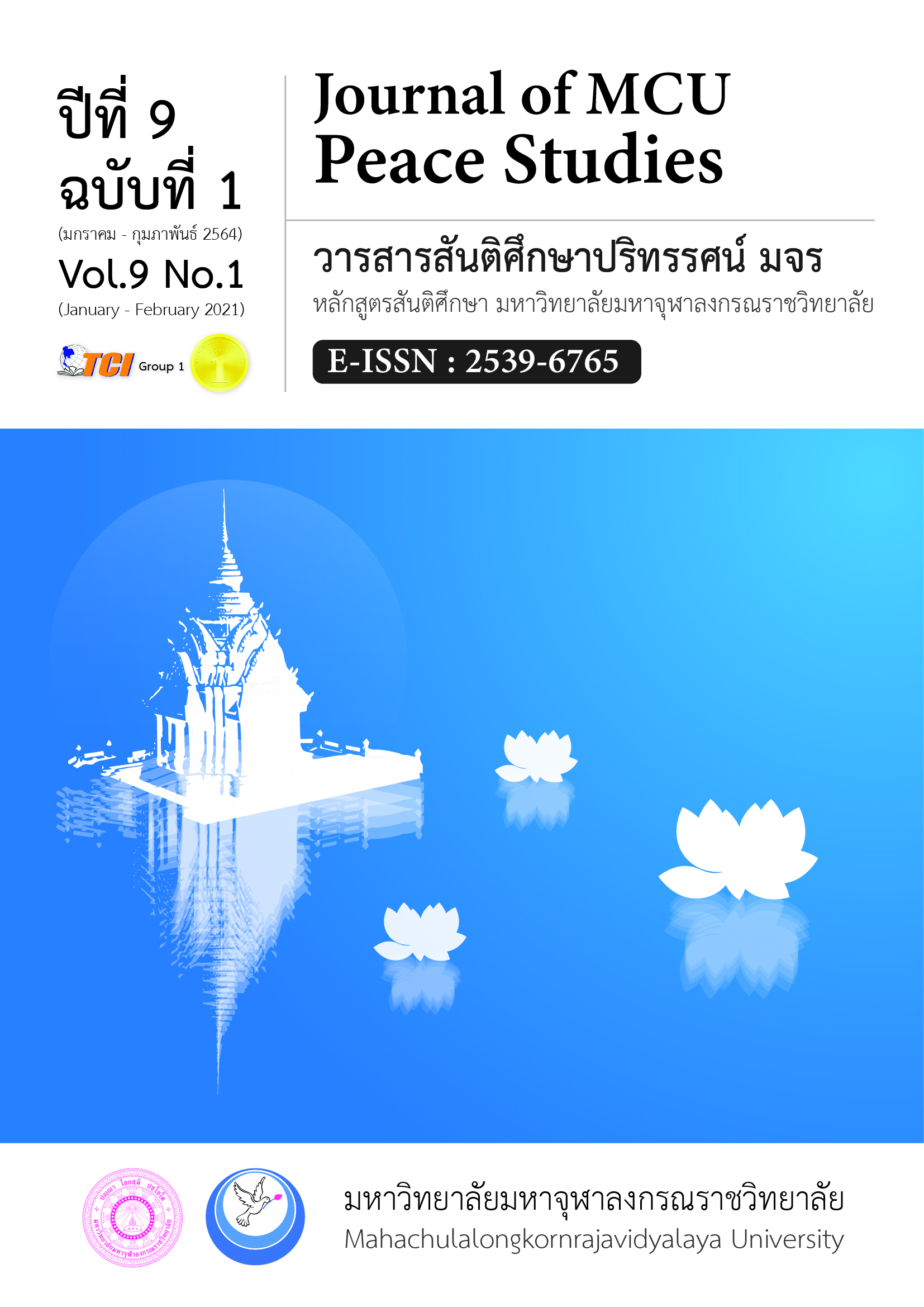การอนุรักษ์สืบสานการดีดซึงในภาคเหนือตอนบนของประเทศไทย
Main Article Content
บทคัดย่อ
บทความวิจัยเรื่อง การอนุรักษ์สืบสานการดีดซึงในภาคเหนือตอนบนของประเทศไทย เป็นส่วนหนึ่งของงานวิจัยเรื่อง การพัฒนาคู่มือการเรียนการสอนการดีดซึง ในภาคเหนือของประเทศไทย การวิจัยนี้เป็นการวิจัยเชิงคุณภาพ มีวัตถุประสงค์เพื่อศึกษาการถ่ายทอด การดีดซึงล้านนา บุคลากรผู้ให้ข้อมูล คือ ครูภูมิปัญญาท้องถิ่น ในเขตภาคเหนือตอนบนของประเทศไทย 8 จังหวัด ได้แก่ จังหวัดเชียงใหม่ ลำพูน ลำปาง เชียงราย พะเยา แพร่ น่าน และแม่ฮ่องสอน จังหวัดละ 2 คน รวม 16 คน ซึ่งได้มาจากการคัดเลือก ผลการวิจัยพบว่า บทเพลงที่ครูภูมิปัญญาท้องถิ่นใช้ในการถ่ายทอดการดีดซึงมี 46 เพลง เพลงที่มีค่าความถี่มากที่สุดใน 10 ลำดับแรก ได้แก่ 1) ปุ๋มเป้ง 2) ล่องแม่ปิง 3) ฤาษีหลงถ้ำ 4) ปราสาทไหว 5) ซอพม่า 6) สร้อยเวียงพิงค์ 7) ซออื่อ 8) กุหลาบเชียงใหม่ 9) หมู่เฮาจาวเหนือ และ 10) ปั่นฝ้าย ครูใช้ซึงลูกสามและลูกสี่ในการถ่ายทอด โดยเทคนิคการเตรียมการสอนผู้เรียนมีความสำคัญมากที่สุด ควรมีพิธีไหว้ครูหรือพิธีฝากตัวเป็นศิษย์ การสอนควรปรับพื้นฐานในการอ่านโน้ตไทย การฝึกดีดซึงเพลงแรกมีความสำคัญมากต้องทำให้ผู้เรียนดีดเป็นอย่างถูกต้อง ครูจะทำหน้าที่ประเมินผลตลอดเวลาตั้งแต่เริ่มทำการสอน โดยใช้วิธีการสังเกต และการฟัง ใน 2 ด้าน ได้แก่ ความถูกต้องของบทเพลงทั้งด้านทำนองและจังหวะ และความไพเราะอารมณ์ของบทเพลง
Article Details
ทัศนะและความคิดเห็นที่ปรากฏในบทความในวารสาร ถือเป็นความรับผิดชอบของผู้เขียนบทความนั้น และไม่ถือเป็นทัศนะและความรับผิดชอบของกองบรรณาธิการ ยินยอมว่าบทความเป็นลิขสิทธิ์ของวารสาร
เอกสารอ้างอิง
Aphichanathong, P. (2015). Interview. October, 9.
Bloom, B. S. (1956). Taxonomy of education objectives, handbook I: Cognitive domain. New York: David Macay Company Inc.
Boonanont, A. (2011). Development of Lanna Traditional Music Curriculum of Nan Cultural Zone. (Doctoral Dissertation). Rajabhat Rajanagarindra University. Chachoengsao.
Bruner, J. S. (1963). The process of education. New York: Vintage Books.
Duangmun, A. (2015). Interview. October, 15.
Gagne, R.M. (1985). The conditions of learning. New York: Holt, Rinehart & Winston.
Klinfung, T. (2005). The Management of Learning and Teaching the Northern Folk Music Band “Salor Sor Seung” in Primary Schools in Chaehom, Lampang Province. (Master’s Thesis). Lampang Rajabhat University. Lampang.
Leosiripong, P. (2001). Music Appreciation. Bangkok: Chong Charoen Printing.
Ministry of Education. (2008). The Basic Education Core Curriculum B.E. 2551. Bangkok: The Agricultural Cooperative Federation of Thailand Limited.
Na Mahachai, S. (2016). Thai Child Playing One Thai Musical Instrument Policy. Retrieved October, 9, 2016 from http://www.nationtv.tv/main/content/378514874/.
Ongsakul, S. (2014). Lanna History. (10th ed.). Bangkok: Amarin.
Songned, K. (2002). Learning Process in Musical Performance of Traditional Music Masters in Amphur Mueang, Nan Province, Thailand. (Master’s Thesis). Graduate School: Mahidol University. Nakhon Pathom.
Sukkasem, P. (2015). Interview. December, 7.
Sumrongthong, B. (2009). “The Rites and Beliefs Associated with the Transmission of Musical Culture in Thailand’s Lanna Region” Project. Bangkok: Faculty of Fine Arts and Applied Arts, Chulalongkorn University.
Suttachitt, N. (1997). Music activities for teachers. (2nd ed.). Bangkok: Chulalongkorn University Press.
Theerasilapa, Y., & Pinthong, T. (1992). Lanna Folk Music. (2nd ed.). Chiang Mai: Klang Wiang Printing.
Valipodom, S. (2002). Archeology History of Lanna Nation. Bangkok: Matichon.


